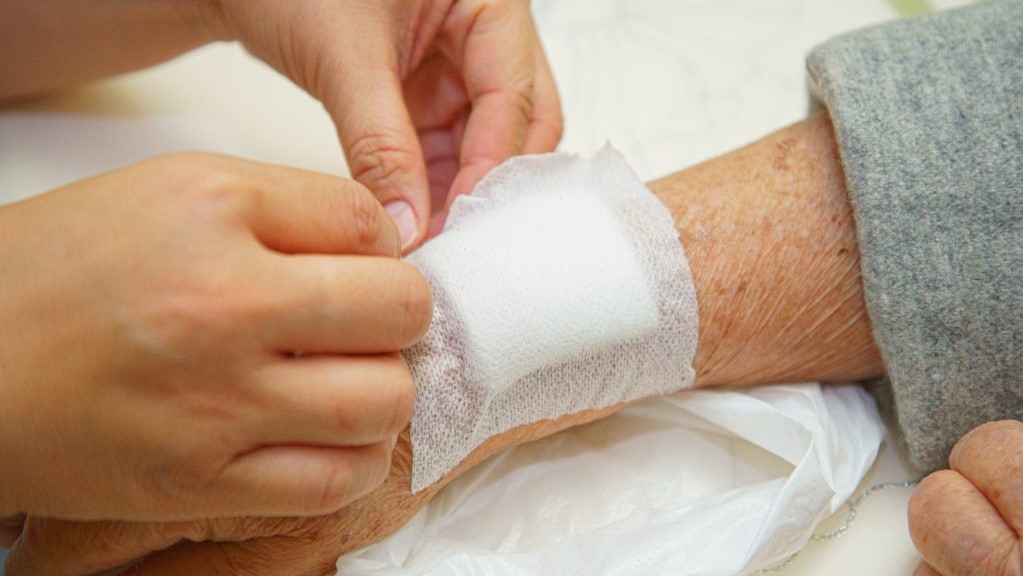FREE Shipping on Orders over $89 with Account – Create One Today!
- (844)-859-9400
- Get Help

Wound dressing changes can often be a source of discomfort for patients. Simply dressing wounds appropriately and carefully goes a long way in reducing the pain of bandage removal.
But there’s more to it than that. Read on to learn how to remove dressings from wounds without pain. Also, learn to reduce risks of infection and improve overall outcomes for you or your patient/loved one.
Assess the patient’s pain levels before and after each dressing change. Acknowledging the presence of pain can go a long way toward a better outcome. Consult the patient in decisions like choosing the best time of day to change dressings.
Together, caregiver and patient can determine the best way to manage discomfort. You can also involve patients in their own wound dressing changes if their overall health and mobility allows. This can bring them a greater sense of control over their pain.
The best dressing for an open wound is one that will not adhere to the wound bed, making it easier to remove without pain. Some traditional wound dressing types, like gauze, may cause more pain simply because of their frequent need to be changed.
Many advanced wound dressings, like alginates, will not adhere to wound beds and can be changed less often. Others, like soft silicone bandages, adhere with a gentle yet affective adhesive, which can be removed and reapplied with minimal discomfort.
Choosing hydrolyzed collagen–infused products can help improve cell reproduction and speed up the healing process. The moist environment provided by these dressings can lessen pain during dressing changes. These advanced wound dressing types work with various levels of exudate and are appropriate for tunneling, undermining and recalcitrant wounds.
Pre-dosing with over-the-counter pain relievers, like Tylenol or Ibuprofen, can help alleviate pain during the change process. In cases of extreme pain, a consultation with the treating physician can determine whether stronger pain medications are appropriate.
Go slowly and use caution when removing securements like surgical tape to prevent medical adhesive-related injury, which will only exacerbate the wound pain. You may need to soak the wound in a normal saline or wound cleanser before removing the dressing if it has adhered to the wound bed or surrounding tissue.
Consider using skin barriers or other wound care prep products before dressing wounds if the patient’s skin is fragile or damaged. These can help remove bandage adhesive from the skin without painful rubbing. Some antibiotic ointments also contain a topical anesthetic to make the process more comfortable, while lowering the risk of infection.
Help your patient relax, reduce anxiety and manage the discomfort of dressing changes with alternative techniques like visualization, distraction and focused breathing. These can provide sufficient pain relief for wound dressing changes and helps the patient avoid both suffering through pain and taking unnecessary medications.
